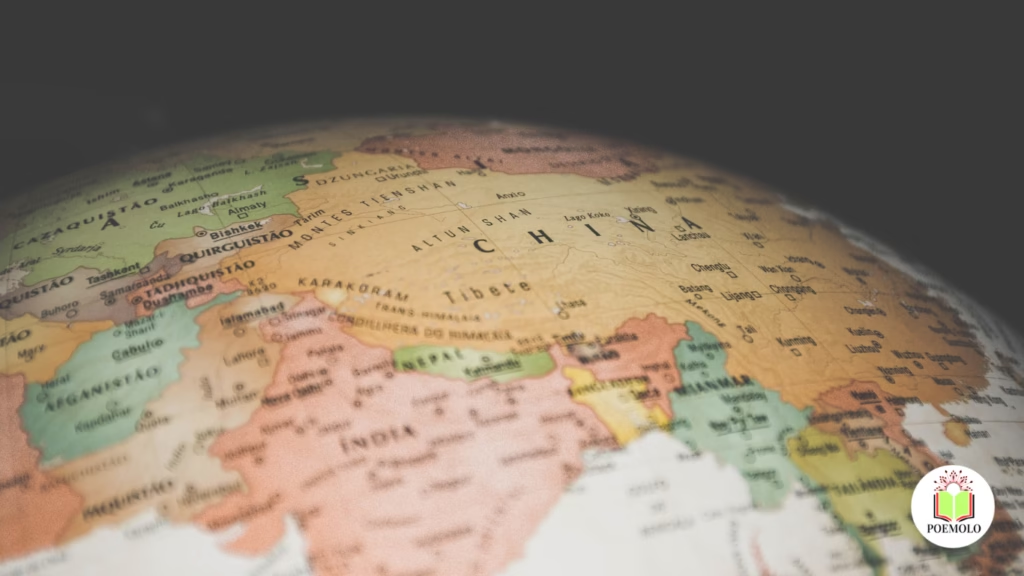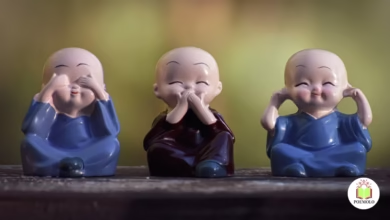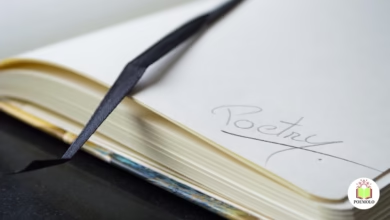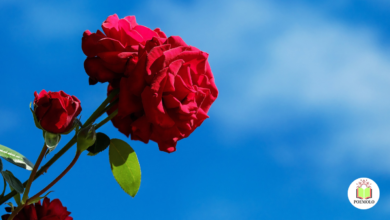Everywhere in the ages, nature has been a constant source of inspiration for poets, and the complex relationship between humans and the natural world is a theme that continues to awesome writers and readers alike.
From the beauty of a blooming flower to the harshness of a storm, nature has provided a mirror for human emotions, a reflection of our inner lives, and a space for both joy and contemplation. Poems about nature and humans explore how these two elements interact, coexist, and influence each other.
The relationship between nature and humanity is multifaceted. It can be one of harmony, where both are in balance, or one of conflict, where human activity disrupts the natural world. Poets have used nature as a metaphor to explore human experience, offering a reflection of the human condition through the lens of the environment.
As we move further into an age where environmental issues such as climate change, deforestation, and pollution become increasingly urgent, poetry about nature and humans takes on a new level of significance, offering both solace and a call to action.
In this article, I’ll explore a variety of themes and examples within nature-themed poetry, focusing on how human beings are portrayed in relation to the world around them. By delving into some classic and contemporary works, we’ll examine how poets have captured the interplay between humanity and nature, revealing both the beauty and challenges of this enduring connection.
The Early Roots of Nature and Humans in Poetry

One of the earliest examples of human-nature interactions in poetry can be found in the works of ancient poets like Homer and Virgil. These poets often wrote about the natural world in the context of human action, where the gods and humans alike were depicted as influencing or being influenced by nature. In Homer’s “Odyssey,” for example, the journey of Odysseus is filled with encounters with gods and natural forces that shape his fate.
The sea, in particular, is a recurring symbol of both challenge and freedom, mirroring the emotional and psychological journey of the human protagonist.
As we move into the Romantic era in the 18th and 19th centuries, poets began to explore the connection between humanity and nature in more direct, personal terms. William Wordsworth, one of the most famous Romantic poets, often used nature as a means to reflect on human life.
Related article: Acrostic Poem about the Invention of Railroads
In his iconic poem, “I Wandered Lonely as a Cloud,” Wordsworth describes the beauty of a field of daffodils and the profound impact the sight has on his mind and soul. For Wordsworth, nature was not just a backdrop for human life, but a source of inspiration and spiritual nourishment.
The daffodils, which he describes as “fluttering and dancing in the breeze,” serve as a metaphor for the poet’s own emotional response to nature, showing how deeply humans can connect with the natural world.
Another Romantic poet, Samuel Taylor Coleridge, reflected on humanity’s relationship with nature in his famous poem “The Rime of the Ancient Mariner.” In this narrative poem, the mariner’s fateful killing of an albatross—a bird seen as a good omen—serves as a symbolic act of humankind’s disregard for nature. The poem’s eventual moral reflects the need for humans to respect the natural world and the consequences that arise when we fail to do so.
These early poems underscore the Romantic ideal that nature is a powerful force capable of both nurturing and punishing humanity, depending on how humans treat it.
Whispers of the Earth
Beneath the boughs where shadows sway,
The earth hums softly, night and day,
A breath of wind, a rustling leaf,
A secret held in quiet grief.
The river winds with silver grace,
Carving paths through time and space,
It knows the footprints left behind,
By fleeting hands, by human kind.
The mountain stands with ancient pride,
A witness to the changing tide,
Yet in its heart, a silent plea—
“Return to me, return to me.”
The birds that soar through skies of blue,
Sing songs of lands both old and new,
They carry tales of joy and loss,
Of endless skies and heavy cost.
We walk upon this sacred ground,
Our voices echo, soft, profound,
But do we hear the earth’s own call,
A whisper soft, yet clear to all?
The flowers bloom, then fade away,
The seasons shift, they do not stay,
Yet in their fleeting, fragile grace,
A lesson lives for us to trace.
The earth is patient, kind, and wise,
But in its gaze, we see the cries,
Of lands we’ve scarred, and skies we’ve torn,
Yet still it hopes, it’s not forlorn.
So walk with care, with heart in hand,
For nature’s voice we must understand,
In every leaf, in every stone,
The earth reminds us, we’re not alone.
Analysis of the Poem:
This poem speaks to the deep connection between humanity and nature, emphasizing how the earth, through its elements—trees, rivers, mountains, birds—communicates with us. Each stanza reflects a different aspect of nature, symbolizing both its beauty and its fragility in the face of human presence.
- Connection and Reflection: The earth “hums softly” and holds “secrets,” indicating that nature has its own stories and emotions that are often overlooked by humanity. The mention of the river, mountain, and birds highlights how nature bears witness to human existence and actions.
- Human Impact: The line “Yet in its heart, a silent plea—’Return to me'” suggests that the earth longs for humans to reconnect with and protect the natural world. It reflects the idea that nature is enduring but suffers from the damage caused by human negligence.
- Fragility and Hope: The poem acknowledges nature’s transient beauty (“The flowers bloom, then fade away”) and the damage that humans have inflicted (“lands we’ve scarred, and skies we’ve torn”). Yet, the earth remains hopeful, always teaching and offering a path toward renewal and understanding.
- Call for Responsibility: The final lines encourage readers to “walk with care” and listen to nature’s voice. This is a reminder that human responsibility toward the environment is crucial, as nature is not just a passive backdrop to human life but an active and vital force that deserves respect and care.
The Role of Nature in Shaping Human Emotion
Poets have long used nature as a way to reflect human emotions, from joy and tranquility to grief and despair. In the 19th century, Emily Dickinson was known for her ability to convey complex emotions through natural imagery.
In one of her most famous poems, “A Light Exists in Spring,” Dickinson explores the fleeting nature of beauty and joy, comparing the brief, yet intense, feeling of spring to the fragile nature of human happiness. She writes:
A light exists in spring
not present on the year
at any other period —
when March is scarcely here
Here, Dickinson uses the imagery of spring as a metaphor for the brief moments of beauty and vitality in life, drawing attention to the impermanence of nature—and, by extension, the human experience. The transient nature of spring is a reflection of the human tendency to chase fleeting moments of happiness, and Dickinson’s poem encourages readers to be mindful of life’s transient beauty.
In a similar vein, Robert Frost, one of America’s most beloved poets, often used nature as a mirror for human emotions. His poem “Nothing Gold Can Stay” reflects on the ephemeral nature of beauty and innocence.
Related article: Two Headed Calf Poem
The poem’s brief, yet powerful, lines remind readers that nothing remains in its original form forever—whether it’s the changing colors of leaves or the inevitable passage of time. Frost captures the essence of human emotion through nature’s cycles, reinforcing how humans, like the natural world, are subject to change.
The Ecological Crisis and Humanity’s Impact on Nature

While many poets celebrate nature as a source of beauty and inspiration, others use it as a warning or symbol of the damage that humans have inflicted on the earth. As environmental concerns became more pressing in the 20th and 21st centuries, poets began to address the impact of industrialization, pollution, and climate change in their work.
Wendell Berry, a modern poet and environmental activist, often writes about the human relationship with nature in a way that urges responsibility and action. In his poem “The Peace of Wild Things,” Berry reflects on the solace he finds in nature, particularly in moments of anxiety and fear.
However, the poem also alludes to the idea that the wild, untouched parts of nature are increasingly rare, and their preservation is essential for the emotional and physical well-being of humans.
Similarly, Gary Snyder, another poet deeply influenced by environmentalism, frequently addresses themes of ecological consciousness and the human role in preserving nature. In his poem “The Call of the Wild,” Snyder connects the desire for freedom and connection with the earth to humanity’s survival, suggesting that the more we disconnect from nature, the more we risk losing our sense of identity and balance.
These poets highlight how humans’ impact on nature is not just a political or social issue, but a deeply personal one. Poetry about nature and humans in this context serves as both a reflection and a call to action, urging readers to reconnect with the earth and take responsibility for the damage that has been done.
Celebrating the Spiritual Connection between Humans and Nature
For many poets, the connection between nature and humanity transcends mere physical or emotional interaction; it becomes a spiritual bond. The natural world, in this sense, serves as a divine creation, a source of wonder and reverence.
Mary Oliver, one of the most well-known contemporary poets, often explores the sacredness of nature in her work. In poems like “Wild Geese,” she invites readers to embrace their place in the world and find solace in the natural world. The opening lines of the poem are:
You do not have to be good.
You do not have to walk on your knees
for a hundred miles through the desert, repenting.
You only have to let the soft animal of your body
Love what it loves.
Oliver’s work encourages readers to embrace their human connection to the earth, recognizing that we, too, are part of the natural world. For Oliver, nature is both a sanctuary and a guide, offering wisdom and comfort to those who are open to it.
Related article: The Power of a Poem about Studies
John Muir, a naturalist and writer whose work often overlaps with poetry, similarly emphasizes the sacredness of nature in his writings. Muir believed that spending time in nature was a form of spiritual practice, a way to connect with something greater than oneself.
His poetic descriptions of the Sierra Nevada Mountains and the wilderness reflect a deep reverence for the natural world and its divine qualities. For Muir, nature was not just a backdrop for human life, but a source of profound insight and connection to the divine.
The Future of Poems about Nature and Humans
As environmental issues continue to grow in importance, the role of poetry about nature and humans remains as relevant as ever. Poets today continue to explore the complex relationship between humanity and the environment, offering both warnings and reflections on the urgent need for change.
Whether it’s through the celebration of the natural world’s beauty or a call for its preservation, poems about nature and humans provide an important space for dialogue about the future of our planet.
As more and more people look to literature for both understanding and inspiration, poems that address the human-nature relationship will likely continue to resonate. The power of poetry lies in its ability to distill complex emotions and ideas into a few carefully chosen words, offering both solace and a path forward.
In an age where the future of our environment is uncertain, poetry can offer both reflection and hope, as well as a reminder of the beauty and fragility of the world around us.
Conclusion
From ancient texts to contemporary verse, poems about nature and humans continue to offer readers profound insights into the complex and ever-evolving relationship between humanity and the natural world.
Whether celebrating nature’s beauty, reflecting on its impermanence, or urging readers to take action in the face of ecological crises, poets have consistently used nature as a mirror to the human experience.
As our understanding of the environment deepens and our connection to the earth becomes more critical, poetry will remain an essential tool for exploring, celebrating, and protecting the world we call home.
Through the exploration of classic poets like Wordsworth and Dickinson, modern environmental poets like Wendell Berry, and contemporary voices like Mary Oliver, we are reminded of the ways in which the natural world and human life are intricately intertwined.
Poetry, in its many forms, continues to serve as a testament to the beauty, the fragility, and the responsibility we share in caring for the world around us.





